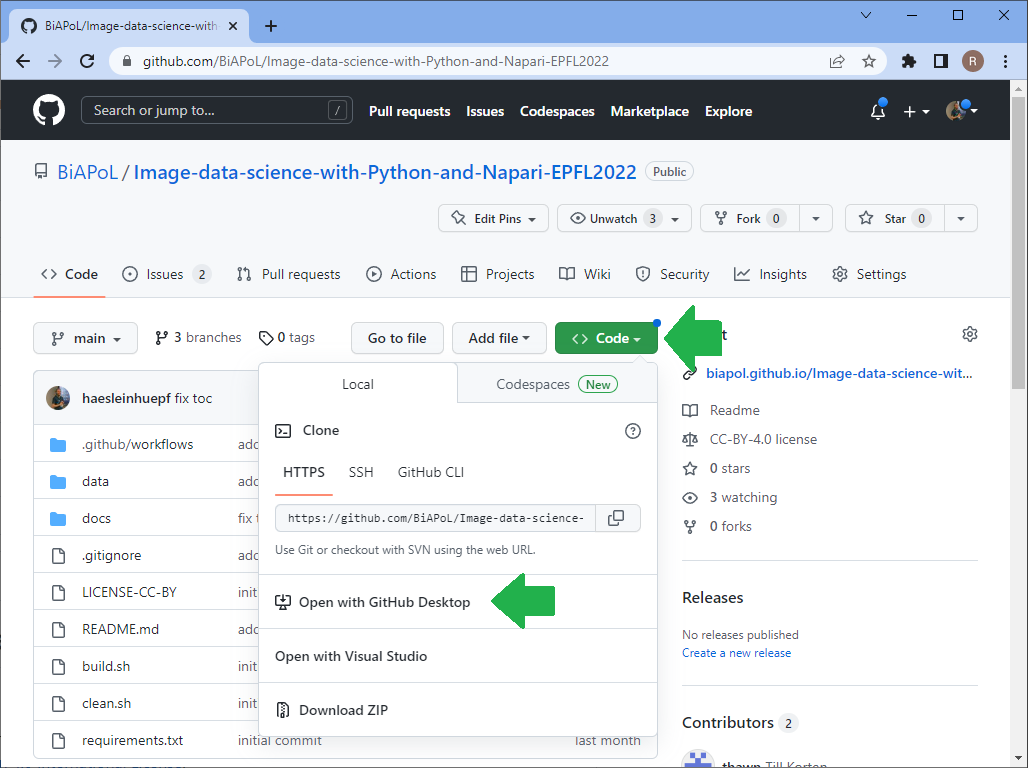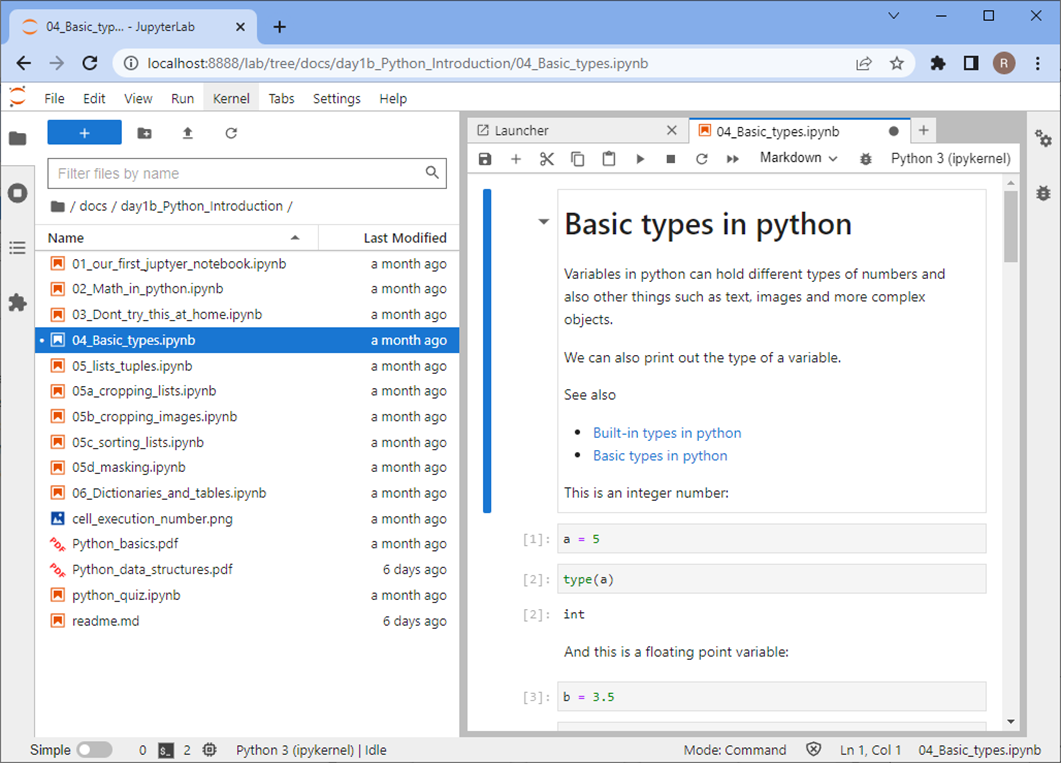NEUBIAS Pasteur course on Bioimage Analysis#
This Jupyter book contains training resources for scientists who want to dive into image processing. It specifically aims for students and scientists working with microscopy images in the life sciences.
Here, we cover three sessions of the Early career investigators track of the NEUBIAS Pasteur course on Bioimage Analysis
Introduction to bio-image analysis (Robert Haase)
How to build an analysis workflow (Robert Haase)
From assistant to notebooks
How to use this material#
For following the course, we recommend downloading the repository from which this Jupyter book is made. All Jupyter Notebooks are executable so that attendees can reproduce all demos and exercises.

Assuming you downloaded the repository to your Desktop, you can open the Jupyter book by opening a terminal and typing:
cd Desktop/Pasteur-NEUBIAS-training-school-on-Bioimage-Analysis
conda activate devbio-napari-env
jupyter lab
Using Jupyter lab, you can navigate to the course lessons in the docs folder.

… and execute the code and experiment with it.

Feedback and support#
If you have any questions, please use the anonymous etherpad (see email) or create a github issue. Alternatively, open a thread on image.sc, put a link to the lesson or exercise you want to ask a question about and tag @haesleinhuepf.
Acknowledgements#
This course was held virtually at the Insitute Pasteur in May 2023. We would like to thank all the people who shared teaching materials we are reusing here. We acknowledge support by the Deutsche Forschungsgemeinschaft under Germany’s Excellence Strategy (EXC2068) Cluster of Excellence Physics of Life of TU Dresden. This project has been made possible in part by grant number 2021-237734 (GPU-accelerating Fiji and friends using distributed CLIJ, NEUBIAS-style, EOSS4) from the Chan Zuckerberg Initiative DAF, an advised fund of the Silicon Valley Community Foundation.
